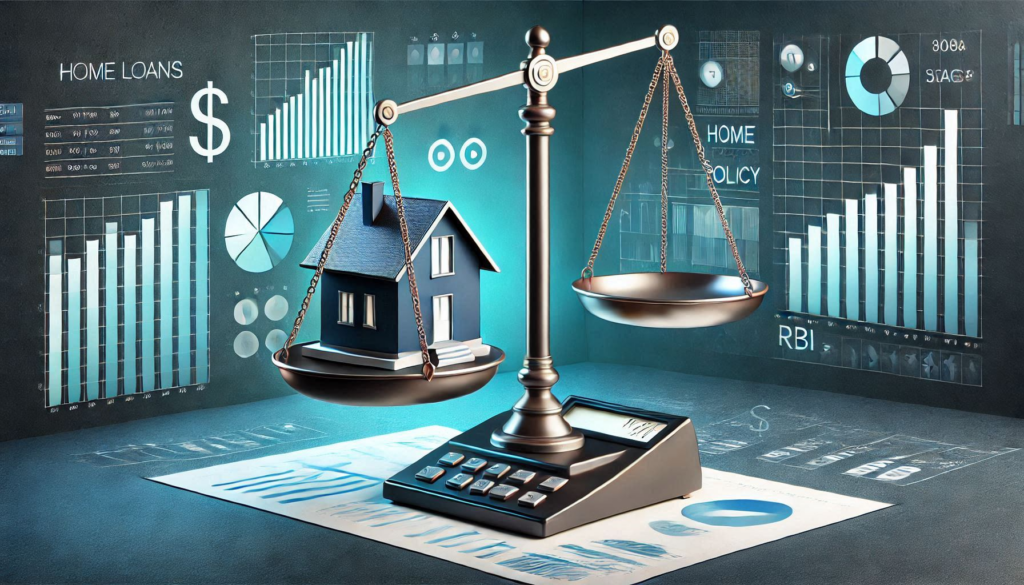In the intricate world of home financing, understanding the repo rate is crucial for every potential homeowner and existing borrower. The repo rate is not just a financial jargon but a powerful tool that directly influences your home loan interest rates and monthly EMIs.
This comprehensive guide will unravel the mysteries of the repo rate and help you understand how it affects your home loan journey.
Table of Contents
Understanding the Repo Rate: A Financial Game Changer
The repo rate, short for repurchase rate, is a critical monetary policy instrument used by the Reserve Bank of India (RBI) to control inflation and manage economic liquidity. Simply put, it’s the interest rate at which commercial banks borrow short-term funds from the central bank. When banks need quick funds to meet their short-term requirements, they pledge government securities to the RBI and receive funds in return.
What Exactly is the Repo Rate?
In technical terms, the repo rate is a mechanism where banks can obtain overnight credit from the RBI by selling government securities with an agreement to repurchase them at a predetermined price. As of December 2024, the repo rate stands at 6.50%, which has remained unchanged for several consecutive monetary policy meetings.
What is Repo Rate? How Does It Impact Your Home Loan EMIs? – The Direct Connection
The repo rate shares a direct and significant relationship with home loan interest rates. When the RBI adjusts the repo rate, it creates a ripple effect across the entire lending ecosystem. Here’s how:
- Interest Rate Mechanism: Banks use the repo rate as a benchmark for determining their lending rates. A higher repo rate typically means higher home loan interest rates, directly impacting your monthly EMIs.
- Borrowing Costs: When the repo rate increases, banks’ borrowing costs go up. Consequently, they pass these additional costs to consumers through higher home loan interest rates.
- EMI Calculation: Your home loan EMI is directly proportional to the interest rate. Even a small change in the repo rate can lead to noticeable differences in your monthly outgo.

Historical Trends and Current Scenario
Since October 2019, most banks in India have switched to repo rate-linked lending. This means your home loan interest rates are now more transparently linked to the RBI’s key policy rate. The current repo rate of 6.50% has remained stable, providing some predictability for borrowers.
What is Repo Rate? How Does It Impact Your Home Loan EMIs? – Practical Examples
Let’s understand this with a practical scenario:
- Loan Amount: ₹30 Lakh
- Loan Tenure: 15 years
- Current Interest Rate: 8.75%
- Monthly EMI: Approximately ₹29,983
If the repo rate decreases by 25 basis points, your EMI could potentially reduce to ₹29,542, saving you around ₹80,000 over the loan’s entire tenure.
The RBI’s Monetary Policy: Behind the Scenes
The RBI’s six-member Monetary Policy Committee meets every two months to review economic conditions and decide on key interest rates. Their primary objectives include:
- Controlling inflation
- Maintaining economic stability
- Supporting economic growth
Impact on Different Types of Home Loans
- Floating Rate Loans: These are directly impacted by repo rate changes. Your EMIs will fluctuate based on the RBI’s monetary policy decisions.
- Fixed Rate Loans: While seemingly immune, these loans can also be indirectly affected during loan refinancing or for new borrowers.
Strategic Insights for Borrowers
How to Navigate Repo Rate Fluctuations
- Stay informed about RBI’s monetary policy meetings
- Monitor your loan’s interest rate regime
- Consider the loan’s overall cost, not just the current EMI
- Explore balance transfer options if rates are favorable
The Future of Home Loan Rates
Experts suggest that while the current repo rate remains stable, future changes depend on:
- Inflation trends
- Economic growth
- Global economic conditions
-
How often does the RBI change the repo rate?
The RBI reviews the repo rate every two months during its Monetary Policy Committee meetings.
-
How can I protect myself from repo rate fluctuations?
Consider a mix of fixed and floating rates, maintain a good credit score, and stay informed about monetary policies.
-
What’s the difference between repo rate and reverse repo rate?
The repo rate is the rate at which banks borrow from RBI, while the reverse repo rate is what RBI pays banks for parking their surplus funds.
-
Can I predict my future home loan EMIs?
While exact predictions are challenging, staying informed about economic trends and RBI policies can help you anticipate potential changes.
-
Does a repo rate change immediately affect my existing home loan?
For floating rate loans, changes are typically reflected in subsequent EMIs, usually within 3-6 months.
Conclusion
Understanding the repo rate is more than just financial literacy—it’s about making informed decisions that impact your long-term financial health. The intricate dance between the RBI’s monetary policy and your home loan is a fascinating journey of economic management.
We’d love to hear your experiences and insights! Have you noticed how repo rate changes have affected your home loan? Share your thoughts in the comments below and help fellow borrowers understand this complex yet crucial aspect of home financing.
